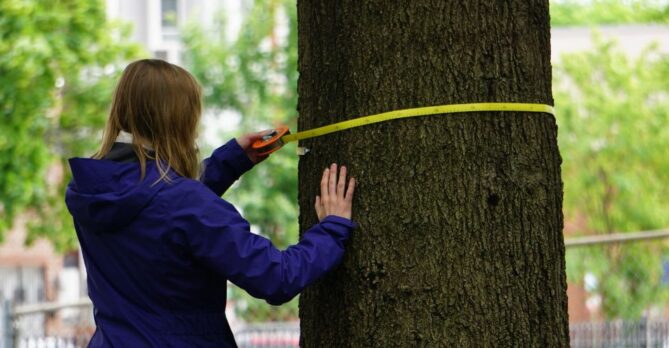At Casey Trees, the work to nurture and protect Washington, DC’s urban canopy is driven by passionate individuals whose dedication shapes not just the city’s landscape, but its future. One such individual is Mark Buscaino, who recently stepped into an advisory role with Casey Trees after almost 20 years as Executive Director.
Mark’s longstanding commitment to urban forestry has left an indelible impact on both the organization and the community we serve. With decades of experience in urban forestry, Mark has witnessed firsthand the evolving challenges and triumphs of managing our tree canopy, and his knowledge offers invaluable lessons for all of us who care about green spaces in our city.
In this special blog post, we sit down with Mark to ask 10 important questions—from reflections on his career and experience, to his vision for the future of urban canopy stewardship. Join us as Mark shares candid insights, wisdom, and hope for the trees that continue to shape our streets, neighborhoods, and lives.
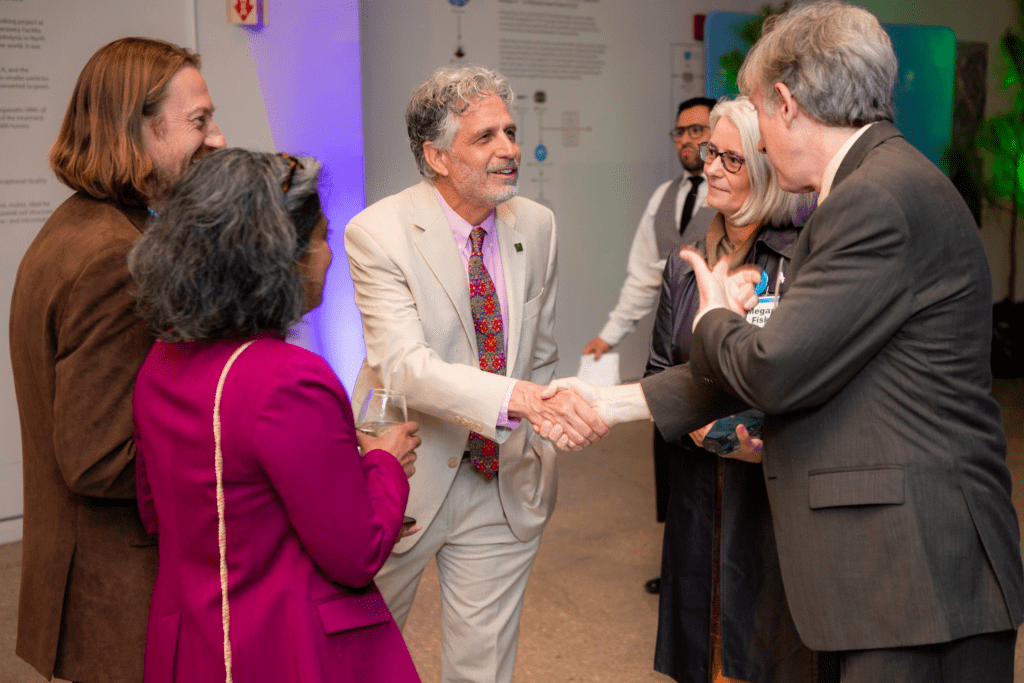


“Looking back over your 20+ years at Casey Trees, what are you most proud of accomplishing during your tenure?“
There have been so many milestones over the years. Our all-volunteer survey of 130,000 street trees in 2002 energized community-tree engagement for hundreds of DC residents. We installed the first green roof in DC (yes – the first!) at our old K Street NW office in 2005 to disseminate that technology city-wide. At our Brookland headquarters, the Silva Cell array and rain garden we built served as a demonstration site for alternative stormwater control while improving the growth and longevity of street trees. At Casey Tree Farm, our switch to fabric containers improved efficiency, reduced costs, and allowed us to produce a higher quality, easily-portable tree specifically geared for urban planting applications throughout the DMV. Helping to get the Urban Forest Preservation Act of 2002 passed into law and its many amendments has been pivotal in slowing DC’s canopy loss. Our groundbreaking Tree Report Card that drew public attention to the ebbs and flows of DC’s trees was unique in the field, along with land preservation, invasives control – there are so many I can’t list them all…
But, what I’m most proud of was helping to maintain the foundation for these successes, based on two key principles. First, managing our resources so the organization remains strong, and second, adhering to our mission to restore, enhance, and protect the tree canopy of the nation’s capital. While these seem like simple concepts, they have been — and no doubt will continue to be — an ongoing challenge. I feel good about that and remain grateful for the staff and board members who helped me with it along the way.
“What initially inspired you to join Casey Trees, and what has kept you motivated all these years?“
I was drawn to Casey Trees because it was unique to the non-profit urban forestry world, and because it had accomplished so much in such a short period of time. Just as important, DC’s unique history and relationship with trees dating back to the L’Enfant plan was a huge draw. And, under Mayor Williams (’99-’07), DC began reinvesting in green infrastructure and urban forestry work to levels never seen before. Being involved in an effort to restore and protect trees in a city with that history and focus was something I wanted to be a part of – it was and continues to be an incredible experience.
“How has your perspective on leadership evolved since you first became Executive Director?“
I think the most important thing I’ve learned over time is that you need to be honest and humble when assessing program impacts, and be ready to pivot if outcomes are less than satisfactory. At Casey Trees, we continually ask hard questions about our efforts – are they achieving the objectives we set out for them? Is anyone benefiting from the work? Is there a more direct way to achieve the planned objectives? Are/have there been untended consequences? And the holy grail – is canopy going up, down, or is it staying the same – which we track continually with our Tree Report Card.

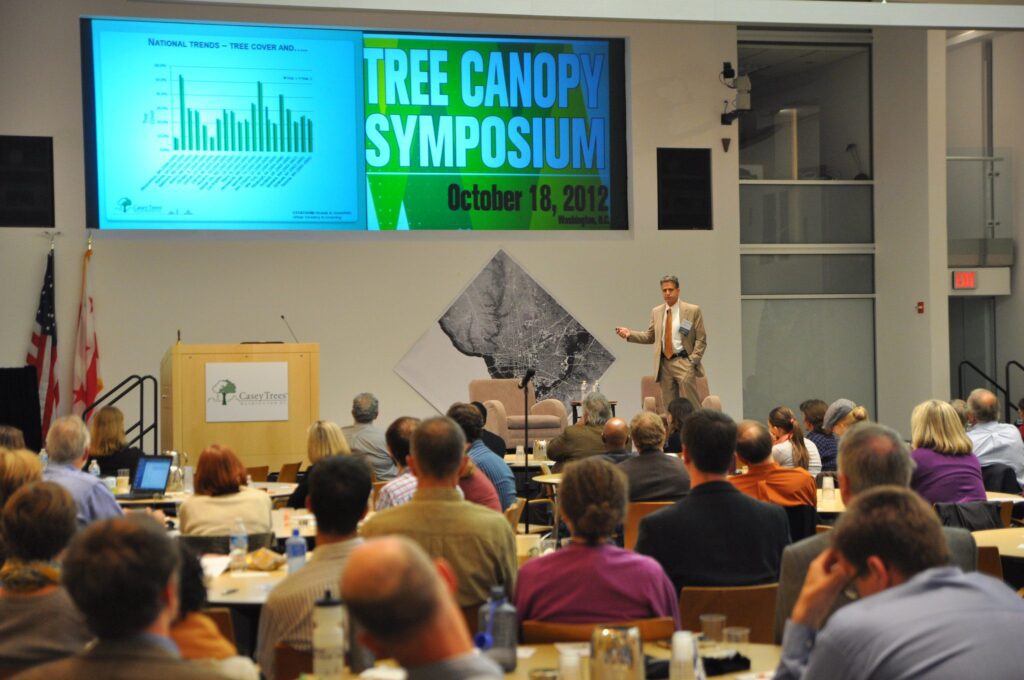
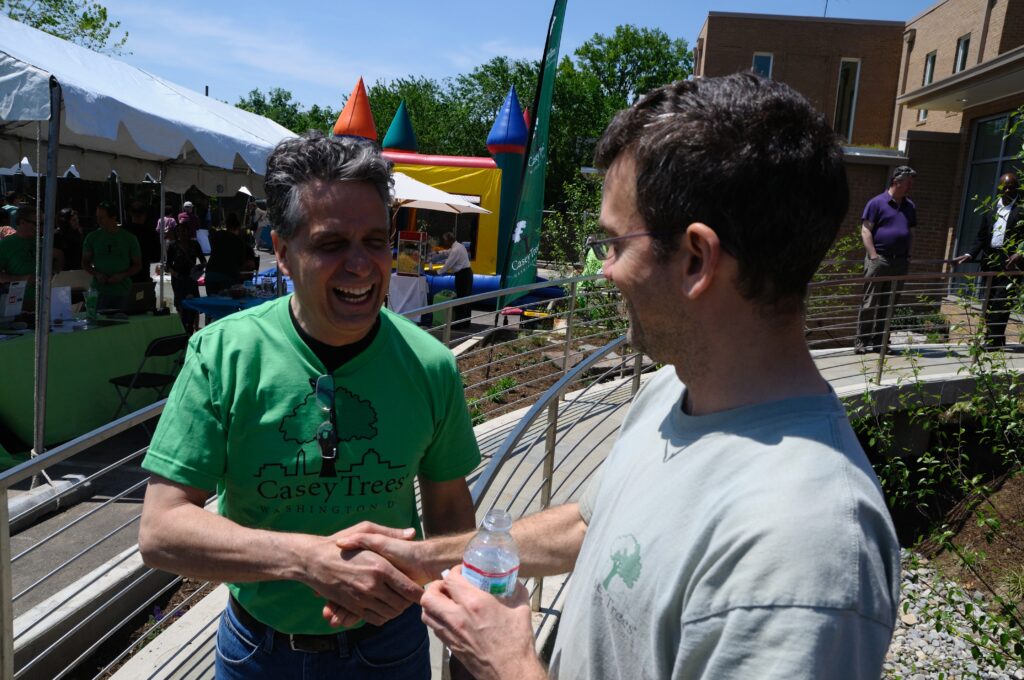
“What was the landscape of urban forestry like when Casey Trees was first formed? How has urban forestry in Washington, DC changed since?“
There has been so much change, but three things stand out. First was Mayor Anthony Williams’ refunding of DC’s Urban Forestry Division in the early 2000’s, and his support in advancing tree protection legislation (the Urban Forest Preservation Act of 2002). In my view, no city can be successful at maintaining a robust, healthy canopy without rudimentary tree protections and a strong, government-funded urban forestry or tree management division – there’s no substitute. That’s why we have and will continue to fight to keep DC’s Urban Forestry Division and the Department of Energy and Environment budgets strong.
Second was the City’s shift in focus from just street trees to trees across all land types public and private – essentially a formal recognition of the entire “urban forest” in DC. Street trees are important, but they just a piece of the urban forest puzzle.
Finally, in 2013 under the Vincent Gray Administration, DC inked its Sustainability Plan which embraced Casey Trees’ 40% tree canopy goal that we launched in 2008. Having an established goal to act as a north star has and continues to be a motivator, and one that is simple and easy to understand for both decision makers and all of DC’s residents.
“What do you consider the most significant challenges and opportunities facing urban forestry in DC today compared to when you began?“
The biggest challenge, not just in DC but nationwide, is that many people, if not most, don’t feel connected to trees enough to take personal action – to plant one in their backyard or at their apartment or housing complex grounds. I’m struck by a local example, that to me anyway, really highlights this fact – that of e-bikes…
For over 10 years, Casey Trees has planted free trees on private lots – a value of about $500 per tree. Contrast that with a more recent program where the City gives away a certain number of “E-bikes” for free. The E-bike program “sells out” in less than a day – about 2,000 of them. The free tree program? We could plant 10,000 trees per year but we rarely receive more than about 4,000 requests despite an ongoing, intensive outreach program that articulates the benefits of trees, which we’ve been doing for just shy of a decade.
The upshot of this is clear. In DC, like other urban areas across the country, the biggest untapped land base for tree planting is on private, not public, property. To maintain a healthy, robust urban tree canopy, therefore, private lot tree planting is essential, and the fact that most people don’t want trees makes progress toward this goal very difficult.
“What are some of the most important lessons you’ve learned about community engagement and environmental stewardship?“
Well, responding to the stewardship question first – it’s a must. That means that every jurisdiction, large or small, that truly cares about and wants an abundant and healthy tree canopy needs to have dedicated funding and professional staff (either in-house or contractually) to steward, or care for, their trees. Non-profits can help with this and significantly so, but they cannot replace this government function. A colleague of mine put it this way: a city that does not take care of its trees does not take care of its people.
Community engagement is equally important, particularly for advocacy efforts geared toward tree protection laws, budget support, and of course fundraising. Municipal urban forestry departments are often prohibited from, or are poorly suited for these roles, whereas a non-profit entity is uniquely suited to do so.
In short, strong government and non-profit involvement in stewardship and community engagement are equally important. They both fulfill unique niches the other cannot serve – or serve well. And when government and non-profit tree programs are able to partner to achieve these mutually-beneficial ends, that’s the golden ring.
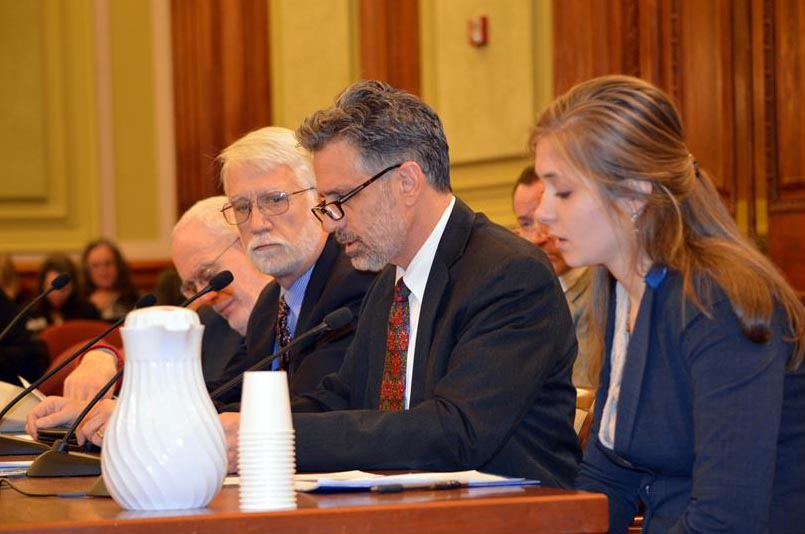
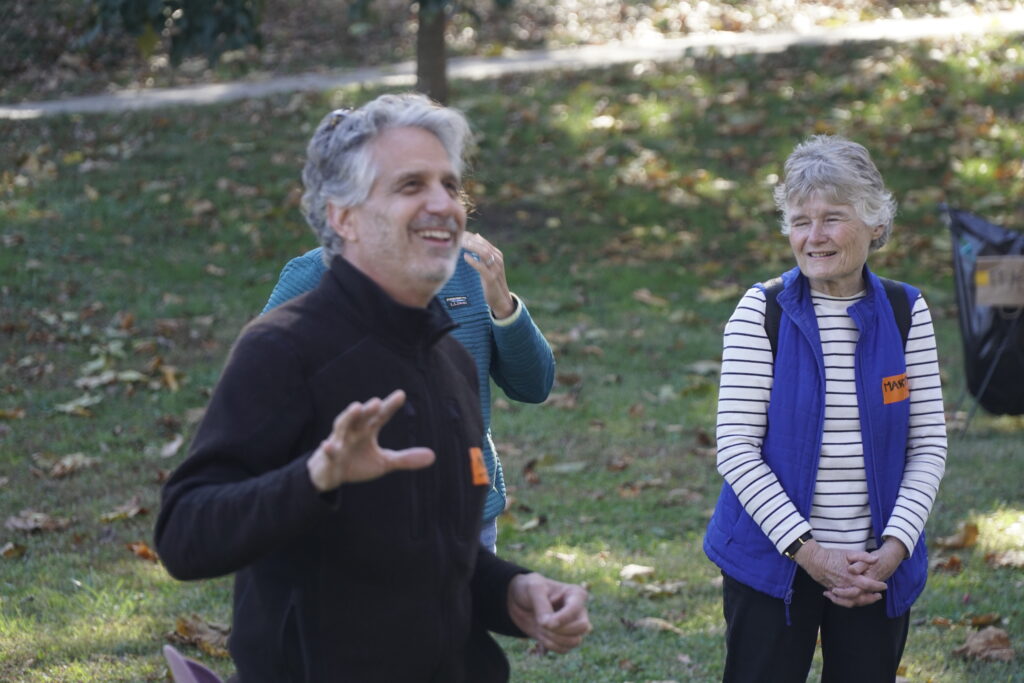
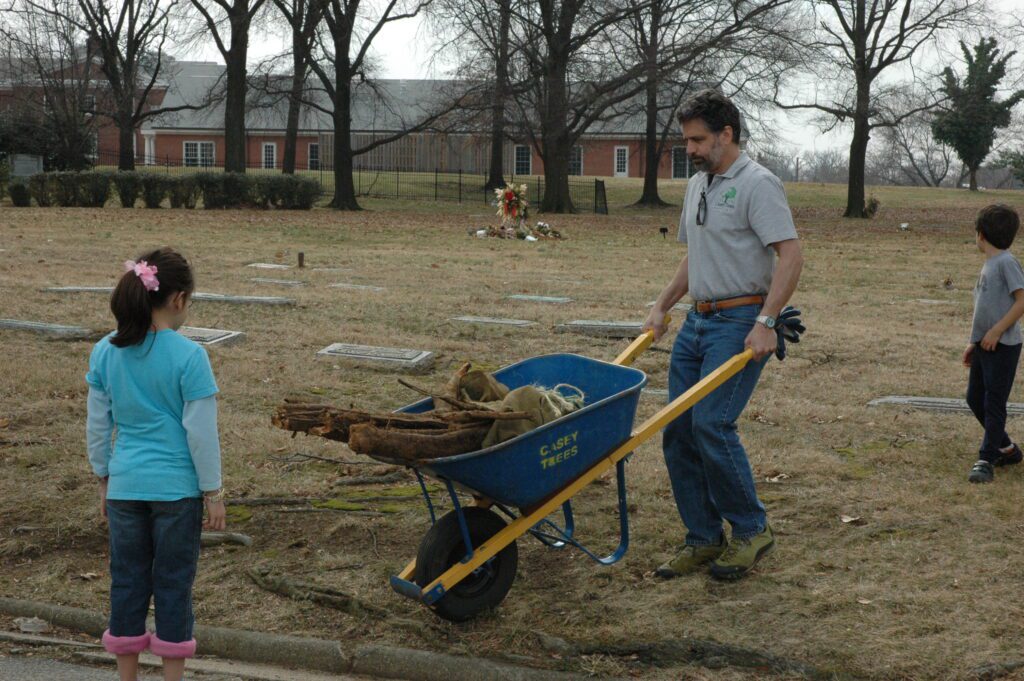
“Is there a particular Casey Trees initiative that stands out for its importance to mission attainment? Why?“
That’s easy – Casey Trees’ efforts to establish and refine DC’s tree protection laws.
No city or town can hope to have an abundant, stable, tree canopy without tree protection laws that cover both public and private property. Period. While tree planting has assumed an outsized role in urban forestry programs because of its community engagement appeal, decades of tree planting initiatives throughout the US have clearly shown that canopy goals cannot be achieved through tree planting alone. Absent tree protections, over time canopy will invariably shrink, or at best – flatline.
In DC, trees are “protected” through laws designed to disincentivize tree removal through a fee system. The laws have protected thousands of healthy trees and resulted in the planting of thousands of others, but still, DC’s canopy has stagnated because its laws protect only DC’s largest trees – “adult” trees 14” in diameter and greater. That’s good, but in reality, it’s only 15% of DC’s trees, and that’s simply not enough. Data is showing that in order to secure a robust canopy for the future, protections need to be given to smaller trees – the “adolescents” if you will that will become the adults of tomorrow.
The Tree Protection Enhancement Amendment Act of 2025 is geared to achieve this – extend canopy protections to smaller trees to ensure a future robust canopy for our nation’s Capital City. I urge you to call your Council Member in support of this bill because without your engagement, it might not cross the finish line.
“What advice would you give to the next generation of urban forestry leaders and advocates?“
Stay curious, set measurable goals, make a plan to achieve them and see it through—but always be ready to ask questions, adapt, and keep learning. Sometimes the process might seem repetitive, but chasing those goals and learning from each step is how real progress happens. Achieving and maintaining an abundant and healthy tree canopy requires leaders and advocates who aren’t afraid to question the status quo and try something bold.
“If you could share just one thing that someone could do to make our world, city, or community a better place, what would it be?“
I have no data to back this up, but ever since COVID I’ve observed an unraveling of our culture in large part because many of our interactions, in particular workplace interactions which make up most of them, have ceased or gone the way of the computer screen. As David Brooks suggests in his book The Social Animal, if you limit daily human interactions, as a species we lean more toward the “animal” and less toward the “social.”
Fortunately, community engagement in our field helps with that. My advice to make our world a better place therefore is that you talk with your elected officials about how much you love the trees in your neighborhood. Plant a tree with someone in a part of town that’s not as green as yours. Smile. Shake someone’s hand. Be present. It’s not difficult to do.
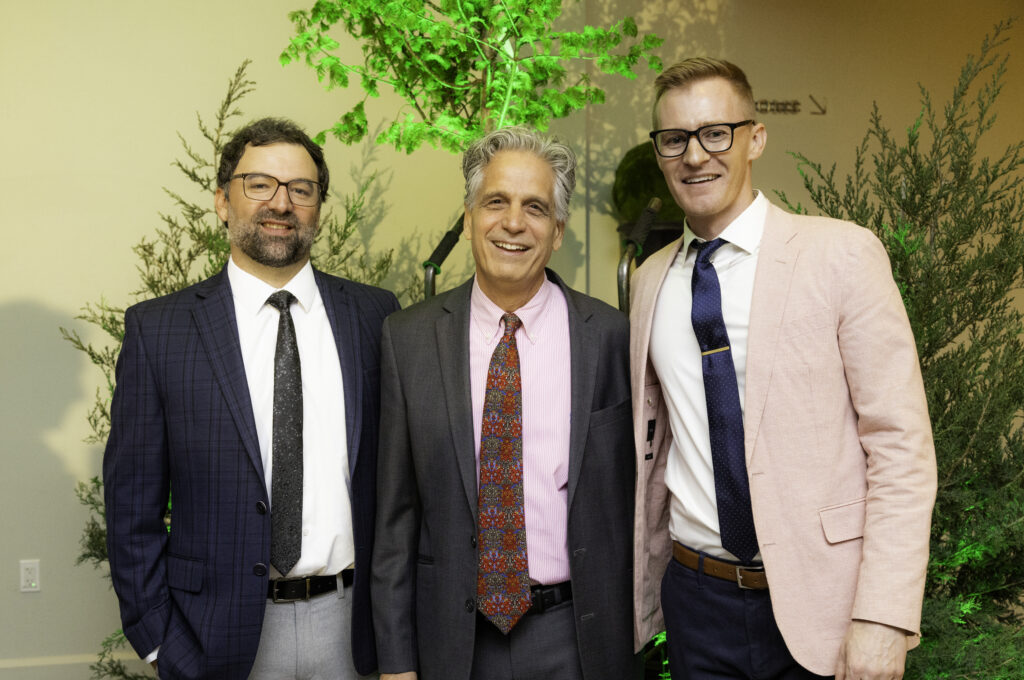
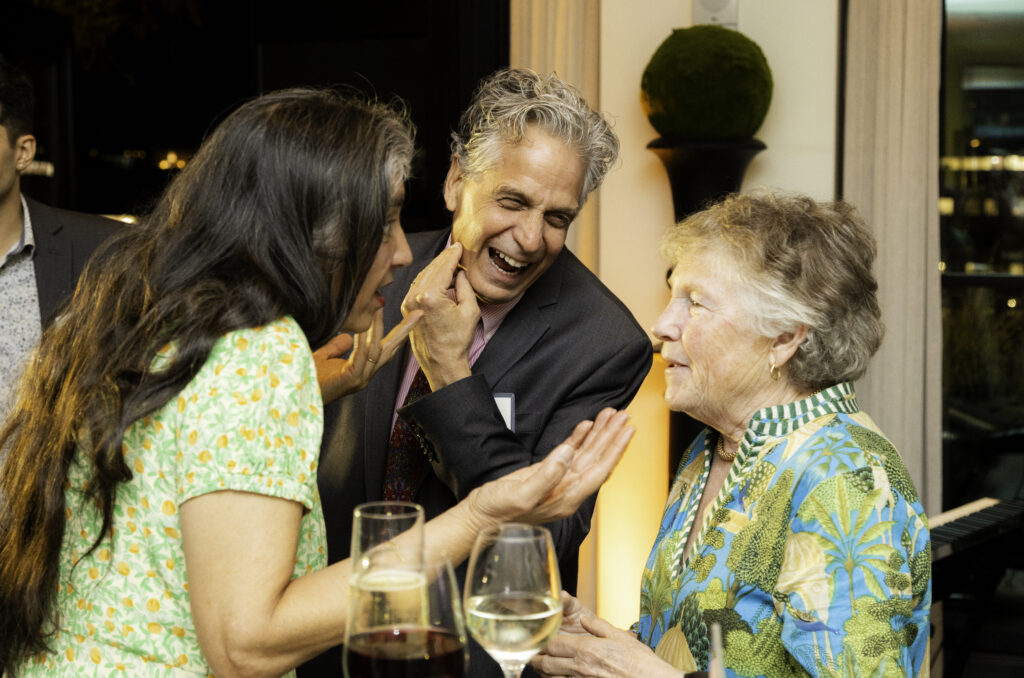

“Do you have any final thoughts or stories about trees, nature, or your time in the industry that you’d like to share with the Casey Trees community?“
My observations over the past three decades tell me that we tend to overcomplicate things that only we as professional urban foresters or arborists care about or understand. There’s a place for professional introspection and debate, but the bottom line is that we’ve known for decades that nationwide, urban areas large and small are losing tree canopy. To address that we must engage programs and activities to: 1) protect the trees we’ve got, 2) plant them where they’re not, 3) continually track and broadly publicize the results, and 4) modify programs over time so they become more impactful in achieving their goals.
That’s my story and I’m sticking to it.
